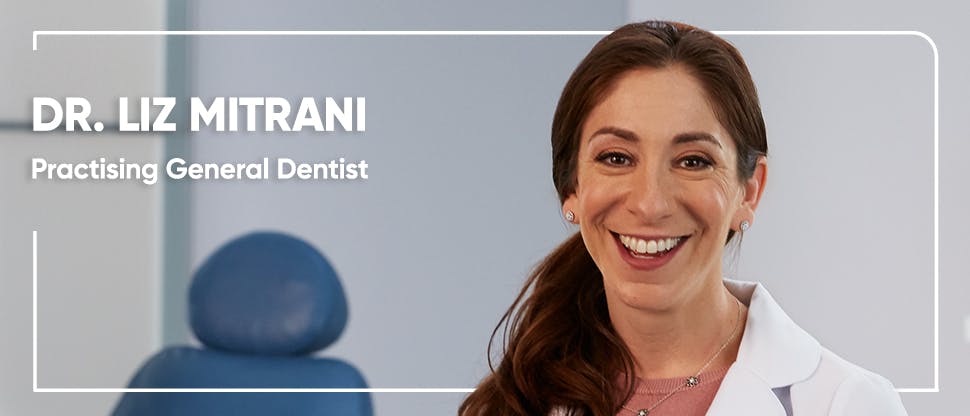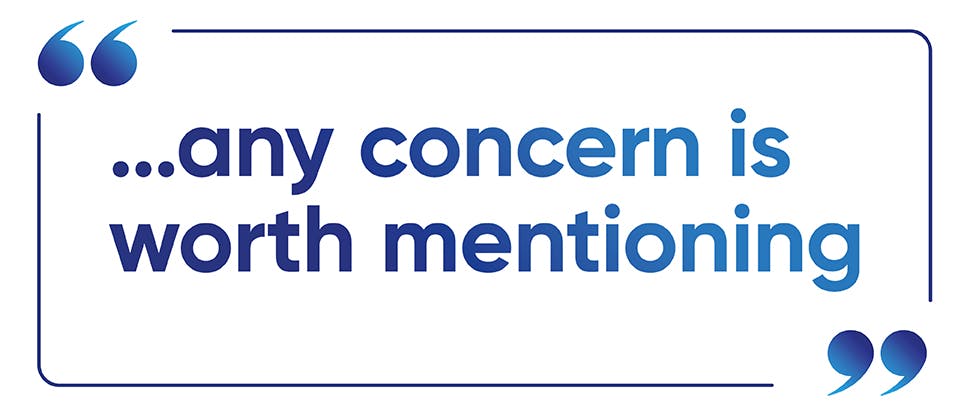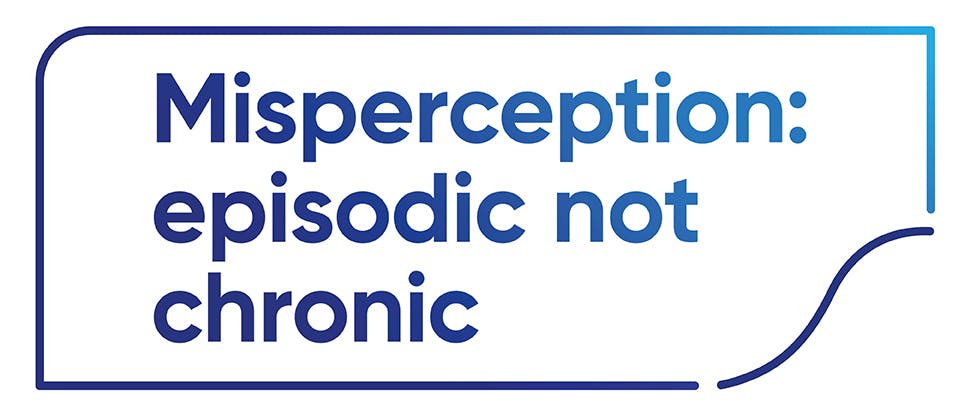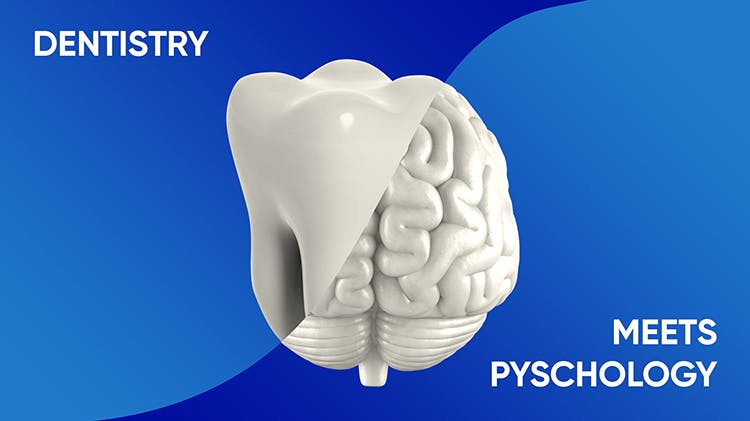Dentist communication skills in practice

Talking. The first step to trusting.
It’s a tough fact to face but people generally don’t like going to their dentist. Good communication skills and talking about issues at the mild end of the oral health spectrum like sensitive teeth, can help patients feel more comfortable.

Show them you care
It should be a given that the patient feels that their dentist provides good dental care, says New York-based dentist Dr Liz Mitrani. But what makes someone feel they have a great dentist, she believes, comes down to the relationship the dentist cultivates with their patient. “I want them to know that I really do care and I want them to feel comfortable that I care enough to help them,” she says.
She recognises, however, that, for some patients, the dental practice is a stressful environment. Data show that around one in five people experience moderate to high dental anxiety.1 All the more reason to make them feel comfortable. Her advice is to try to create an environment where the patient feels safe enough to talk about anything.
Opening the conversation to talk about perceived minor oral health issues, such as dentin hypersensitivity (DH), could be one way to do this. “The patient may think that sensitivity is a little thing that’s not worth mentioning but I want them to know that any concern they have is worth mentioning,” says Dr Mitrani.
Dr Koula Asimakopoulou, Reader in Health Psychology, King’s College, London, believes DH allows dentists to demonstrate their empathy for the patient. “Empathy is about being able to put yourself in the shoes of your patient and seeing the world from their perspective and in this case, to the extent that the condition is not causing huge problems to patients’ lives, it should be fairly easy to be empathic.”

A sensitive subject
Although data show one in three people experience DH, Dr Mitrani’s personal experience is around half of her patients are affected.2 This high prevalence makes it an issue worth putting on the patient’s – and dentist’s agenda. “Sensitivity is a real pain, it’s a real feeling,” she says. “I think the concern the patient has is that they’re afraid that it's something serious besides the fact they don't like the feeling.”
There may also be concern that it could progress. “For the patient they think: ‘Oh my nerve!’ Then they think the progression is root canals” she adds. Being able to recommend something as simple as a toothpaste to manage DH can make the dentist-patient interaction reassuring and highly relatable. “They're using toothpaste anyway, so this is not starting up a new regimen or new routine.”
Addressing the symptoms is only part of the picture, however. DH is a chronic condition, but patients may not perceive it that way. “I don't know if they think of it in terms of acute and chronic,” explains Dr Mitrani. “It just hurts when it hurts. I had this hot or cold drink, and this happened. So, to them, it's usually episodic.”
Helping patients understand it is a chronic condition that is underpinned by their existing behaviors and habits is important, she believes. “If we don't curtail or take care of habits, dietary or mechanical, or reflux or other systemic issues. There will be a progression. We have to go back to the source to modify change.”
Encouraging patients to change their behavior has benefits for the dentist too, says Dr Asimakopoulou: “A dentist who shows they care, and they are empathic about simple behavior change, is probably in a better place to tackle more complex changes further down the line because they will have a better relationship with their patients.”
“Talking about something that they view as mild and they wouldn't maybe necessarily raise, opens the floor to the patient”

Let’s talk
Communication principles such as open questions, using simple language, mirroring patients’ words, providing reassurance, personalising and empathising during the conversation and seeking clarification throughout, can all be utilised when talking about DH.
Raising it as an issue and giving the patient the opportunity to talk about it also helps legitimise it for the patient. “Talking about something that they view as mild and they wouldn't maybe necessarily raise, opens the floor to the patient,” says Dr Mitrani.
She recommends starting the consultation with a blank slate that the patient can fill with their concerns. Asking the patient if there is anything they want to talk about or wish to focus on at the start of the consultation, gives the patient permission to talk about what matters to them, before moving onto any action-oriented tasks, such as investigations and procedures. “Don’t ask: ‘is this working?’ as that closes down the conversation.”
Language is important too. Although the definition is dentin hypersensitivity, patients may opt for “sensitivity” or “sensitive teeth”. “Take their lead how they want to describe it. That’s how they're interpreting it and that's their truth,” is Dr Mitrani’s advice.
Clarify as you go along and ask patients if they have any questions or if they need the information written down. Also be aware of body language. She uses visual cues to “look like I really want to hear what they have to say, because I do”.
How to end a conversation is important too. “I want to see a positive outcome. So they'll trust me more when they can relate to me and they'll trust me when I make a recommendation for a toothpaste or treatment or procedure.” Offering a last chance to ask about anything, or even chatting as you walk the patient to the door are common approaches Dr Mitrani uses in practice.
Conclusion
Taking the time to talk about DH in practice can not only put the patient at ease but can legitimise a problem that can be easily managed with a change of toothpaste.
| Communication tip3,4 | Dr Mitrani’s tips to talk about DH in practice |
| Use open, not closed questions where possible(to invite conversation, with no sense of right or wrong answer) | “How can I help you?” “Is there anything you want to focus on today?” “Is there anything that's bothering you?” “Do you find yourself waiting for a cold drink to warm up a bit, or a hot drink to cool down a bit, before drinking it?” “Do you make sure food doesn’t touch certain teeth?” |
| Active listening (Shows understanding and a response tailored to the patient’s needs) | Listen to what they say after they’ve been to the hygienist, do they mention sensitivity? Think body language – look like you want to hear what the patient is telling you |
| Explain using non-jargon, easily understood language | Use sensitivity, not dentin hypersensitivity Mirror the language the patient uses to describe their sensations (twinge, shooting pain, ache...) |
| Clarify information and check that the patient understands | “I just give out so much information. Is there anything that I could do to clarify or write down for you?” “Do you have any questions?” “It’s OK if you miss something” |
| Make sentences more understandable (e.g. use personal statements) | “It's really common, you’re not alone” “I’ve had sensitivity” |
| Avoid the passive voice (suggest simple action) | “Let's try something as simple as changing your toothpaste” |
| Provide reassurance | “This is quite normal” “I think we can help you” |

Practical guide for helping your patients
Download our consultation tool for further tips on communicating with dentin hypersensitivity patients.

Patient psychology and Dentin Hypersensitivity
Reframing dentin hypersensitivity as a chronic condition with a psychological impact can allow dental practitioners to be associated with successful patient behavior change

Diagnosing for a better partnership
One simple question could be the key to revealing dentin hypersensitivity in your patients and so open the door to better communication about their wider oral health